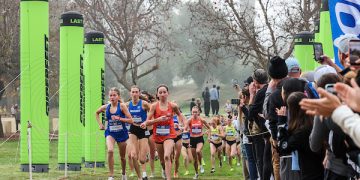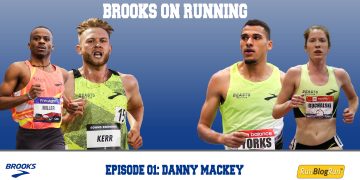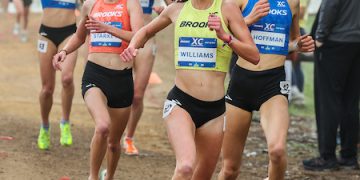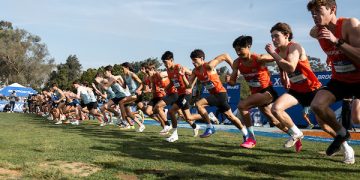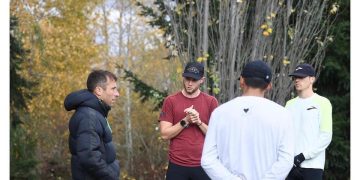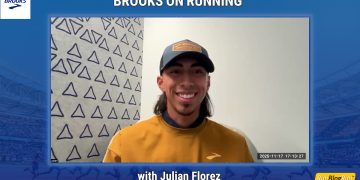 Kerron Clement, Rio 2016 Olympic champion, photo by PhotoRun.net
Kerron Clement, Rio 2016 Olympic champion, photo by PhotoRun.net
Kerron Clement is one of the most underestimated athletes in our sport. He may, quite frankly, be the most talented athlete of his generation. Yet, one would never know it. A four time World Championship gold medalist, Kerron did not get truly serious about his fitness, goals and focus until Rio 2016, eleven years AFTER he started his professional career.
RelatedPosts
David Hunter wrote this feature on Kerron in early April. I am posting it the first week of May, a few days before the Doha Diamond League. As I was traveling from Frankfurt to Kuwait City, then, Doha, I found Kerron Clement sitting quietly in the Lufthansa waiting area. I said hello and told him that his story would be up and around the world before his opening DL race for 2017.
Seriously, Kerron Clement is finally figuring out just how good he is at this event. And he has years to go, as Mr. Hunter so wisely noted.
April 9th, 2017
As is the case in virtually every undertaking in life, goal-setting is an essential ingredient for track & field success. The better athletes in our sport reflect upon past accomplishments, assess their fitness level, target their goals, and map out a strategy to achieve them. Yet without the athlete’s commitment, the prospects for goal achievement are slim indeed. Studies show that when an athlete does commit, but then also verbalizes and shares the targeted goals with others, it serves to strengthen the resolve of the athlete who has gone public with the dream. Some athletes – who see risk in sharing their goals with others – are coy about their annual or long-range objectives and are reluctant to share their goals with others. Other bolder and more confident track & field performers do not fear publication of what they hope to accomplish and see it as technique to inspire them to employ their best efforts to succeed. Kerron Clement is one such athlete.
Born in Trinidad and Tobago, Kerron and his family moved to Texas when he was very young. “My grandmother was the one who migrated my family and me to Texas for a better life,” explains Clement. “She was big part of me being in the U.S. and being successful.” Kerron ran as a youngster and went out for the track team in high school. “When I was in high school, I actually wanted to quit track because I had a knee injury and the pain was unbearable,” confesses Clement. “I went to my coach [Michael Moseley] and told him I want to quit. He told me, ‘No, don’t quit. I see some potential. I see you going to the Olympics.’ I told him, ‘What are you talking about, the Olympics? I want to quit right now.’ He talked to my mom and my mom convinced me to stay at it. She said, ‘Where is the little boy who loved to run and come first?’ My mom is the one who persuaded me to stay with track. I have to thank Coach Moseley for planting that seed about going to the Olympics. I didn’t believe in myself at that time. But he did.” It was a coach’s belief that proved to be well founded. Just a few years later, Kerron – as an 18 year old – ran 48.51 to become the 2004 400H World Junior Champion.
After high school, Kerron headed to the University of Florida to train under the watchful eye of Mike Holloway, one of the most respected sprint/hurdle coaches in the country. The zenith of Clement’s collegiate career was the 2005 NCAA indoor 400 meter final. “I was going into the final as a scared animal. There were Olympians in the field and I was just a sophomore. I thought, ‘Oh my God, I have to run!’ So I was running scared,” recalls Clement. “I had no inclination as to how fast I was running. That’s the reason why I ran the way I did. I just ran from start to finish.” Clement’s winning time of 44.57 set a new indoor 400 meter world record – a global best that still stands 12 years later. Recalling that race, Clement laughingly adds, “I always say that if someone is to break that record, they are a very special athlete.”
After two decorated two years at Gainesville, Clement sensed it was time to move on, to step up and challenge himself. “I just had it in my mind that I was so much better than the field when I was in college. I just felt I needed to run with the big boys. I felt like it was time to step up to that next level and compete,” explains the hurdle specialist on his decision to become a professional. “In 2004, I did not go to the Olympic Trials because I thought I wasn’t ready to run on that stage. But when I won the gold medal at the World Juniors and that time [48.51] would have been fast enough to win a medal at the Olympics, I just felt it was time for me to go and venture out.”
It proved to be the right move. The next year, unshackled from the demanding competition schedules of collegiate track, the new pro sparked a special record assault on the 4 x 400m relay world record. “I called Wallace [Spearmon] and said ‘Let’s run a relay. We could break a world record.’ So he called Jeremy [Wariner] and Darold [Williamson] and we got it together,” explains Clement. In March of 2006 on Fayetteville’s fast oval, that quartet clocked 3:01.96 – still the fastest 4×4 time ever run. “We knew were going to run really fast,” notes Clement. Although the failure to conduct a post-race EPO analysis ultimately denied that foursome the world record, the IAAF still notes that 2006 race result as the #1 4×400 meter relay performance on its all-time world list.
While Clement had his share of successes as a young pro, the competition he experienced at the professional level did expose the often-times erratic nature of his hurdling. Early on, Clement’s unbridled speed and his occasionally undisciplined racing sometimes pushed the frisky young colt out of rhythm on the homestretch. “Honestly, I really think that in the hurdles you get better with age. When I was younger, I just used to run and make mistakes. I wasn’t thinking,” he confesses. “But now that I am older, I’ve learned about the hurdles. I’m thinking while I’m running. I’m executing my race plan. As you get older, you get better with the hurdles – just like fine wine,” he adds light-heartedly. The Olympic champion continues to refine this hurdling. “I’ve been doing a lot of drills all of last year and this year – working on my technique. Going back to when I used to run the high hurdles [he ran a 13.77 PR as a 16 year old], I’ve worked on my height and the execution of my hand movements and I think I mastered it last year. And I’m going to do the same thing this year.”
The 4-time world championship gold medalist also has embraced a simple 400H race strategy that works for him. “For me, I know that I am fast and strong and I just get out and just keep running. My thing is ‘Catch me if you can,'” offers Clement in revealing his straightforward approach to the long hurdles. The 2006 World Cup champion is aware of various other approaches to racing the one lap barriers, but is quick to dismiss those different strategies – especially the Bershawn Jackson-like race plan of getting out quickly, downshifting on the backstretch, and then charging from behind over the final 3 hurdles. “I don’t adopt that race strategy,” states Clement frankly. “That doesn’t work for me. Your up two hurdles, then relax on the back stretch, and then you kick – I think you’re burning too much energy doing that. In a big race, you’re playing with fire doing that. I just get out and trust my strength for the last 100 meters and just finish.”
Earlier in this decade – after some coaching changes – Clement struggled as his performances began to sag: failing to make the 400H final at Daegu’s World Championships and finishing 8th in the 400H final at both the 2012 London Olympics and 2013 World Championships in Moscow. “After finishing 8th in the Moscow final, I just felt like it was time to take a break. I was mentally depleted,” the hurdle star admits. “I told my coach I was not going to run the rest of the season. I needed a break. I had run for the past 10-12 years straight without taking a break and I think mentally I was just done.” In essence, Clement made 2014 a sabbatical year. “Taking that break in ’14 really helped me. I didn’t even watch the U.S. outdoors.” It was the rejuvenating break the hurdler needed. “In ’15 I finished 4th in the Beijing world championship finals and I thought, ‘OK, I’m getting closer.’
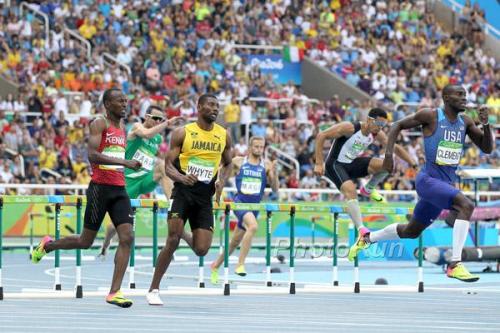 His race be won, Kerron Clement, en route to 2016 Rio gold, photo by PhotoRun.net
His race be won, Kerron Clement, en route to 2016 Rio gold, photo by PhotoRun.net
While the off year undoubtedly helped, it was his honest, no-nonsense goal-setting and his personal commitment that ultimately positioned Clement to make 2016 his career year. “After Beijing, I thought, ‘OK, I can taste the podium now,'” explains Clement. “The next year [2016], I just kept my goals intact. I changed my diet. I started lifting with my strength and conditioning coach. And that really helped me get back to where I was and being the old Kerron Clement again.” And what a year 2016 was for Kerron Clement: Olympic champion; Diamond League champion; fastest 400H performer of the year [47.73 in Olympic final]; and the year’s #1 ranked 400m hurdler by Track & Field News. “Those were the goals I set for myself, to be honest. And when I achieved those goals, it was overwhelming. I didn’t cry at the Olympics; I cried when I was coming back from Zurich [after clinching the Diamond League title]. I was just reflecting on the entire season: the Olympic gold medal; Diamond League champion, fastest clocking of the year; and #1 in the world. On the plane, I just broke down and cried. It was so emotional to me because I couldn’t believe I accomplished this all in one year.” Reflecting on that emotional outpouring at 30,000 feet, Clement chuckles and adds, “I hope nobody on the plane saw me.”
2016 not only showed Clement the power of goal-setting and commitment, but it also taught him the added importance of sharing your goals with those around you. “You have to stick things into existence,” exclaims the Olympic champion who now also knows that sharing your dreams with your support team further strengthens resolve. And it is a process he plans to again follow in this championship year. “Last year after the Olympics, I thought, ‘I can do better.’ I want to run faster. I want to run a PR again.” [His PR of 47.24 – a set in 2005 – is #7 on the all-time world list] So that is my goal for 2017: to run a PR – a personal best,” proclaims the hurdle champion, no longer guarded about expressing his athletic ambitions, as he identifies a 2017 goal. The Nike athlete is also candid on the legacy he hopes to leave. “I’m the type of athlete that never gives up. I fight. I’m willing to go through adversity. And I am one of the greatest hurdlers of all time. That’s what I aspire to be,” states Clement in revealing his long-term goals. “I want to be great. I want to make my name a household name.”
 The happy gold medalist, Kerron Clement, photo by PhotoRun.net
The happy gold medalist, Kerron Clement, photo by PhotoRun.net
Capturing the individual Olympic gold medal last summer allowed Kerron Clement to place an important, missing tile into the mosaic of what to date has been a glorious elite track & field career. Because the 400 meter hurdle champion has been at the pinnacle of the sport for well over a decade, it is easy to forget that when he stood atop the Rio podium, Clement was not yet 31 years old. Yet Clement is already looking ahead and committing to the 2020 Games. “That’s in my sights,” reveals the reigning Olympic champion. “I am going for the gold in Tokyo.” And that public pronouncement by Kerron Clement – who turns just 32 on Halloween – is a declaration his competitors may find scary.
Author
-
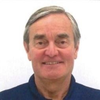
Dave Hunter is an award-winning journalist who is a U.S. Correspondent for Track & Field News. He also writes a weekly column and serves as Senior Writer for www.RunBlogRun.com, and covers championship track & field competition domestically and in such global capitals as Moscow, Birmingham, Zurich, Brussels, Beijing, Rio de Janeiro, Zagreb, Ostrava, and Doha. Hunter frequently serves as the arena or stadium announcer for championship track & field gatherings, including the Ivy League, the Big East, the Mid-American Conference, the NAIA, the Big Ten, and the Millrose Games. Hunter has undertaken foreign and domestic broadcast assignments. He ran his marathon P.R. 2:31:40 on the Boston Marathon course back in the Paleozoic Era. To find out more about Dave, visit his website: www.trackandfieldhunter.com He can be reached at: [email protected]
View all posts


